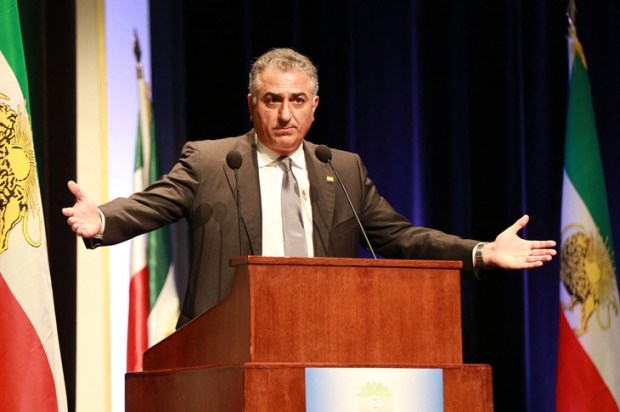The death of Queen Elizabeth II is one of those special historical moments of near-universal feeling: a common, transcendent moment of grief, loss, and appreciation for a remarkable person.
Yet, there is a peculiarity about it all: why are so many affected by a person we have never met or known in any direct sense? And why do so many participate in the rituals of mourning and those welcoming a new monarch?
Of course, the role of a monarch in a media age helps answer these questions to some degree. But it doesn’t give a complete answer. There is something mysterious about it all that is not easily explained.
The answer lies, at least to some degree, in how humans seek common, transcendent symbols that express something of the best of ourselves and bring us together.
Queen Elizabeth II was such a symbol. She lived her humanity in an exemplary way – in selfless service, humility, humour, faith, and love. She dutifully dedicated herself to public service in an age of individualism and outrageous self-expression. She bucked this trend from an early age: ‘I declare before you all that my whole life whether it be long or short shall be devoted to your service.’
Queen Elizabeth II could have lived her celebrity in a very different way. She chose not to ‘lord it over’ others but to serve. She took direct inspiration from her family, particularly her father who was thrust into the kingship unexpectedly at one of the worst times.
She also took inspiration from her Christian faith. She repeatedly professed the importance of her faith, though in an understated and natural way. Her symbolic, transcendent role as monarch was supported by her faith: ‘I know just how much I rely on my own faith to guide me through the good times and the bad.’
Most importantly, she lived according to Christ’s exhortation to serve and not to be served, as she remarked in 2012 Christmas message:
‘This is the time of year when we remember that God sent his only son “to serve, not to be served”. He restored love and service to the centre of our lives in the person of Jesus Christ. It is my prayer this Christmas Day that his example and teaching will continue to bring people together to give the best of themselves in the service of others.’
Queen Elizabeth II lived in a way that contrasted to so many monarchs who lived to be served and to accumulate power, wealth, and land. She lived as the British empire was ‘decolonised’ and replaced by a Commonwealth of Nations. This new Commonwealth was re-oriented away from empire to a new mission characterised by, as the Queen remarked in 1953, ‘An entirely new conception – built on the highest qualities of the Spirit of Man: friendship, loyalty, and the desire for freedom and peace.’ Some have criticised this ‘new conception’ as covering over the evils of the past.
As part of this project, Elizabeth II’s reign, much like the popes of the modern era, continued the depoliticisation of the institution of the monarchy and head of state. The monarchy was further distanced from direct political power and partisanship, and taken into the realm of transcendent, unconscious symbolism.
Queen Elizabeth summed up her symbolic role in this moving way:
‘I cannot lead you into battle. I do not give you laws or administer justice but I can do something else – I can give my heart and my devotion to these old islands and to all the peoples of our brotherhood of nations.’
This level of symbolism functions at a fundamental level of shared human meaning and bonding. It expresses normally unspoken values, beliefs, and virtues about who we are and what we stand for. In this sense, particularly under Elizabeth II, the monarchy became a ‘spiritual’ institution more than a political one, as Joseph Sternberg put it.
Elizabeth II put a distinctive, personal mark on this era of depoliticisation by her emphasis on service and her dignified and personal manner. She gave heart – indeed, for her, a Christ-like heart – to an institution that was at the centre of a nation and empire and which, at its worst, had been engaged in colonial domination and warfare.
In this way, she undertook and cemented the project of her father to place the monarchy at the symbolic heart of the nation and Commonwealth, and to re-orientate the values and legacy of the British empire. She began to address the empire’s problematic past, while presenting a positive and engaged monarchy at the service of ordinary people and, indeed, the world.
Elizabeth II’s reign, however, has been criticised for not dealing sufficiently with the past and putting a civilised face on previously oppressive empire. Fair voices of criticism need to be heard, especially from indigenous peoples. At the same time, there is a danger that the monarchy’s role can be misunderstood, particularly in its new phase post-empire. The monarchy is largely a symbolic institution, not a political one, so it must be careful about how it engages in political-historical debates. It can make careful gestures, but it must do so in dialogue with the government and the public.
As symbolic institution, the monarchy can be a window or cover for the good and bad parts of a cultural-political system. As a spiritual institution, the monarchy is the focus of good and bad undercurrents of a people. It becomes the symbol of a people’s best moments, but also the focus of blame, anger, and scapegoating at its worst moments. For Elizabeth and her family, it meant accepting public adulation, voyeurism, and vitriol. The monarch needs to be able to accept criticism, but also believe that the institution still has a positive, healthy role to play symbolically and spiritually for the nation and Commonwealth.
In this sense, Elizabeth II not only guaranteed the monarchy’s survival, but more importantly, re-defined its political and spiritual character focused on service, patriotic duty, and love. She became a solid, though adaptable, symbol of cohesion and hope in a fast-changing period characterised by postmodernism, pluralism, secularisation, and polarisation. The global appeal of the British monarchy speaks to the symbolic success of Queen Elizabeth II and her family, despite major issues along the way.
There remain, nevertheless, challenges to the identity and functions of the British monarchy. These include grappling with its own history and its religious, social, and political inclusiveness. Its popularity will be dependent on its continued constitutional and symbolic functionality, particularly expressed in Charles III’s style and the royal family’s cohesion. In this, the Queen set an example by being very engaged in her constitutional duties while remaining publicly apolitical. Her neutrality usually ensured that she was not a polarising figure but a unifying one – a rare feat in a very political and polarised age.
In this sense, she lived out her (Christian) vocation as a symbol of unity and service, which went beyond superficial differences to touch on our essential shared humanity. More than a constitutional figure, she journeyed with people in the different ups and downs of life, particularly in difficult times. Like the institution she embodied, she was not perfect, especially with respect to some of her family affairs. This imperfection showed her humanity. It could be accepted more readily because she was genuine, authentic, and caring.
The Queen’s death marks the end of an era, but for Elizabeth, it marks the journey into a new life – the rightful end of a life of service, dedication, and self-giving. For the greater public of the UK and Commonwealth, we have been given a symbolic, spiritual institution that must continue to touch on our deepest humanity and traditions while growing and adapting with us.
Joel Hodge is Senior Lecturer in the Faculty of Theology and Philosophy at Australian Catholic University, and the author of Violence in the Name of God: The Militant Jihadist Response to Modernity.

























